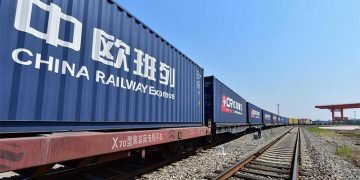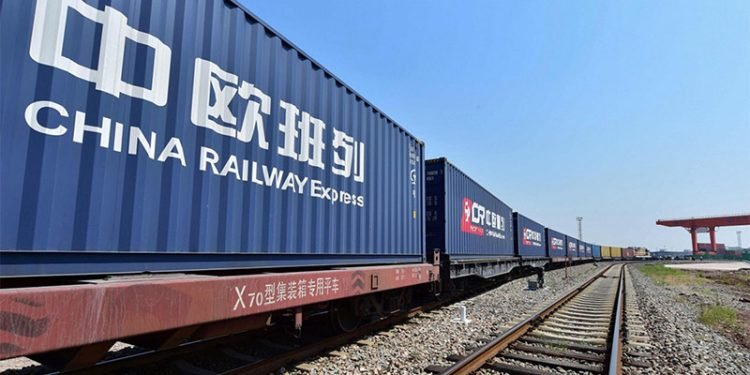ISTANBUL | June 17, 2025
By Maria Kalamatas
Category: World → Global Logistics
Türkiye officially launched an upgraded rail freight corridor connecting Istanbul to Xi’an on Monday to deepen its position as a key link in the Middle Corridor trade route, thereby strengthening its role as a bridge between Europe and Asia.
The launch, held at the Halkalı terminal just outside Istanbul, marks a significant increase in capacity and frequency for eastbound cargo via the Trans-Caspian route—now viewed as a vital alternative to the congested and politically sensitive Northern Corridor through Russia.
A Timely Adjustment to a Changing Map
“We are not replacing a route. We are building resilience,” said Turkish Transport Minister Abdulkadir Uraloğlu during the opening remarks.
As global shippers increasingly diversify away from Russian and Belarusian rail corridors, Türkiye’s strategic position between the Black Sea, Caucasus, and Central Asia has turned from geographical trivia into a geopolitical asset.
With the upgrade, Türkiye’s railway operators—working alongside partners in Georgia, Azerbaijan, and Kazakhstan—will now run three full trains per week to western China, cutting total transit time to under 20 days.
Cargo on the Move: Textiles, Machinery, and Pharmaceuticals
The renewed corridor is already seeing bookings from Turkish textile exporters, as well as European firms looking to reach inland Chinese cities without relying on Shanghai or Tianjin seaports.
Early cargo manifests include machinery, food additives, and active pharmaceutical ingredients (APIs), a sign that the route may soon challenge air freight for speed-sensitive goods in specific categories.
The Bigger Picture: A New Trade Rhythm
This isn’t just about one country improving its rail system. It’s about rebalancing the global logistics landscape. By increasing its investment in east-west cargo flow, Türkiye is inviting a more multipolar trade model—one where supply chains don’t orbit just around China, Germany, or the U.S., but stretch laterally across continents.
“Every shipment we send east changes the narrative,” said Selin Yilmaz, logistics director for a Turkish export consortium. “We’re no longer just the last stop in Europe—we’re the starting line.”
What Comes Next?
While initial operations focus on eastbound trade, officials hinted at plans to improve westbound rail infrastructure by late 2025, potentially opening new options for Chinese and Central Asian exporters heading toward Southern Europe.
And as the Middle Corridor gains momentum, observers expect other players—Iran, Uzbekistan, even India—to find ways to plug into this emerging network.























